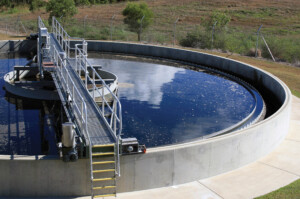This Week In Ag #139
Think of it as a brawl in an old west saloon. Tempers flaring, haymakers tossing, chairs and tables busting. But this time, it’s cowboys vs. politicians. That’s how it felt last week when news broke that the US was looking to import Argentine beef.
Few sectors anywhere, even in agriculture, evoke more pride and passion than raising beef. It transcends livelihood. Unbridled passion. Legacy. A reflection of the Western spirit. And it stays in your blood. As a proud multi-generational beef producer and husband of a cowgirl, I can attest.
Comments from the President sparked further outrage. When any sitting US President opens his mouth (or Truth Social app, as the case may be), there are usually consequences. Last week was no exception. The price of feeder calves dropped about $20/CWT. That’s a loss of over $160 per calf headed for the feedlot. Meanwhile, choice boxed beef prices climbed by nearly $9/CWT. Hmmm….
Trump told ranchers that they “have to get their prices down.” If only they had that ability.
Cattlemen are price takers, not price makers. They are beholden to the meat packers. Today, four packers – Tyson, Cargill, JBS and National Beef (the latter two are foreign-owned) – process 85% of all beef in America. In 1980, the four largest packers controlled just 36%.
Sure, cattle prices are now at historic highs. Cattlemen are making money. But for every dollar consumers spend on beef, the rancher’s share is about 35 cents. That’s down from 60 cents in 1980. Meanwhile, the USA has lost over 17% of its cattle ranches since 2017. That’s more than 150,000 producers.
Ranchers were also told that “the only reason they are doing so well is because of the tariffs.” The truth is that cattle prices have climbed steadily this decade. The US herd size is now at its lowest level since the JFK era, while consumer demand has grown 9%. Recent droughts across the Plains shortened feed supplies, forcing many producers to cull their herds. And replenishing herds is a slow and costly process. High cattle prices also mean high replacement stock prices. Gestation periods are over 9 months. From the moment a replacement heifer is born, you’ll wait well over three years before her calf is ready for market.
One of the biggest issues cattlemen have with the current state of the beef industry is country-of-origin labeling. That’s because currently “Product of the USA” doesn’t mean 100% “Product of the USA”. Due to a loophole, beef processed and packaged in the USA could be labeled “Product of the USA.” Packers have been free to utilize this labeling as they outsource cheaper beef products with fewer health and safety regulations. And despite being the world’s largest beef producer, the USA is also the second-largest beef importer. Currently, imported beef trimmings make up about 20-30% of all ground beef sold in the USA.
US ranchers believe that given a choice, American consumers will reach for products “100% born, raised and processed” in the USA.
USDA did react last week with an action plan to “Fortify the American Beef Industry.” This included more transparent labeling. Effective January 1, 2026, only products that have been born, raised, and slaughtered in the United States will be eligible to make voluntary USA-origin labeling claims. But this is not the same as mandatory labeling. Nor did the action plan address the packer monopoly or imports.
Oh, and just how big is the current US cattle inventory? We don’t know, because those who report this data have been furloughed due to the current government shutdown.
Related Posts

Humic Acid Biostimulant Research by BHN Humic R&D Lab Scientists Published in Int’l Agronomic Journal
In its May 2021 issue, Frontiers in Plant Science published a research article by BHN Humic R&D Lab scientists Dr. Hiarhi Monda, Ryan Fountain, and Dr. Richard T. Lamar in collaboration with Dr. Amy McKenna of the National High Magnetic Field Laboratory, Ion Cyclotron Resonance Facility, Tallahassee, Fla. The research, titled “Bioactivity of Humic Acids

Bio Energizer, Micatrol & Bio Feed Reduce COD and Stabilize Wastewater Treatment for Plastic Producer
A plastic manufacturer in Taiwan needed a new process to efficiently treat elevated incoming chemical oxygen demand (COD) to comply with stringent EPA regulations for effluent discharge. The plant is an activated sludge treatment system with an influent of approximately 2,000 cubic meters per day (CMD) which is equivalent to approximately 530,000 gallons per day

Microplex® JS Jump Starts Utah Summer Camp WWTF
by Heather Jennings, PE If I had to choose a favorite of our microbial products it would have to be our Microplex® JS product. It is a two-part formulation of a live synergistic blend of natural, Class I bacteria, specifically chosen for their ability to rapidly degrade solids, fats, lipids, proteins, detergents, hydrocarbons, and other

